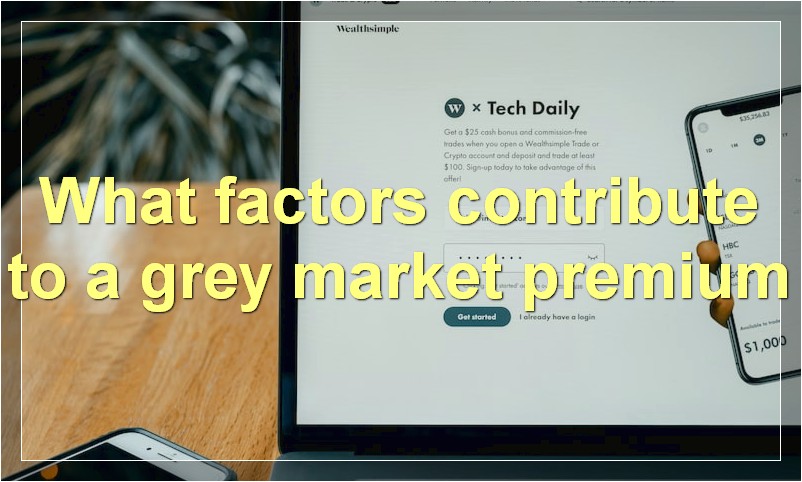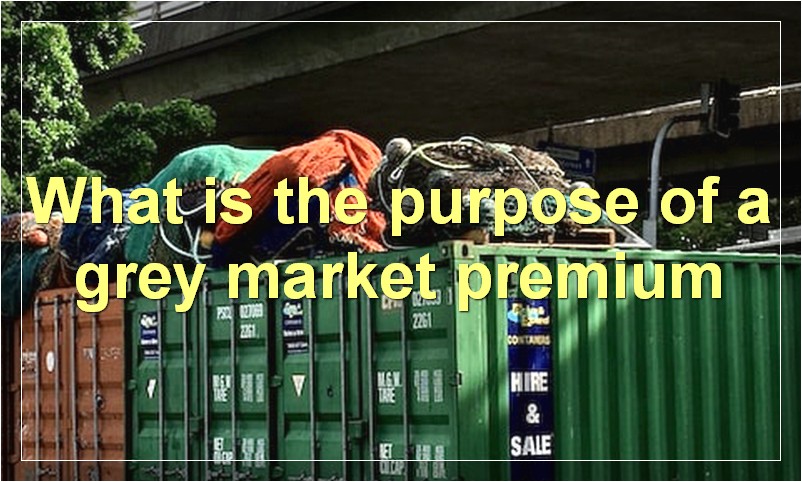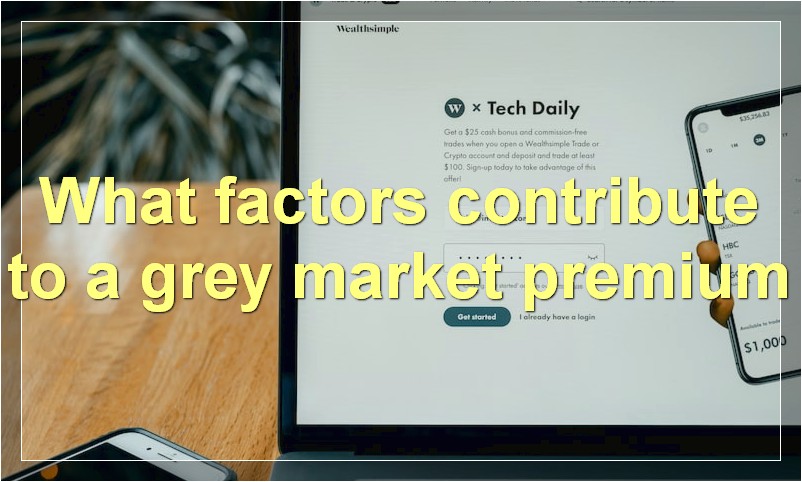There’s a good chance you’ve heard of the grey market premium before, but do you really know what it is? In this article, we’ll break down everything you need to know about the grey market premium, including what it is, how it works, and why it exists. After reading this article, you’ll have a better understanding of the grey market premium and be able to make informed decisions about whether or not it’s right for you.
What is a grey market premium
A grey market premium is the difference between the price of a security on the secondary market and its price on the primary market. The term “grey market” refers to the trading of securities that are not yet registered with the Securities and Exchange Commission (SEC).
Investors often turn to the grey market to get their hands on new issues before they are officially available on the primary market. The risk with this strategy is that there is no guarantee the security will be registered with the SEC, which means the investor may not be able to sell it.
The potential reward, however, is that investors can buy securities at a discount to their eventual primary market price. This is because the issuer typically prices its securities at a discount to their eventual market price in order to generate interest from buyers.
For example, let’s say Company XYZ is planning to go public and it plans to price its shares at $10 each. However, in the grey market, Company XYZ’s shares are trading at $9 each. This means there is a $1 grey market premium.
Investors should be aware of the risks involved in buying securities in the grey market, but for those willing to take on the risk, the rewards can be significant.
What factors contribute to a grey market premium

There are a few factors that contribute to a grey market premium. One is the lack of availability of the product in the official channels. This creates pent-up demand which drives up prices in the grey market.
Another factor is the risk associated with buying from a grey market dealer. There is always the possibility that the product is counterfeit or not exactly as advertised. This risk is reflected in the higher prices charged by dealers in the grey market.
Finally, there is the simple fact that many people are willing to pay more for convenience. If they can’t get the product they want through official channels, they are often willing to pay a premium to get it through the grey market.
How is a grey market premium calculated
A grey market premium is calculated by taking the difference between the current market price and the price of the security on the secondary market. The premium is then added to the current market price to get the new price. This new price is what is known as the grey market premium.
What is the difference between a grey market premium and a regular premium
A grey market premium is an insurance policy that is sold outside of the normal channels, and a regular premium is an insurance policy that is sold through the normal channels. The main difference between the two is that a grey market premium may not be subject to the same regulations as a regular premium, and as such, may be more expensive.
Does a grey market premium always exist
When it comes to investing in stocks, there are a lot of different factors that can affect the price. One of these factors is whether or not the stock is being traded on the grey market.
The grey market is a type of market where stocks are traded without going through a traditional stock exchange. This can lead to a higher price for the stock, since there is less regulation and transparency in the grey market.
However, not all stocks that are traded on the grey market will have a higher price. In some cases, the prices may be the same or even lower than what you would find on a traditional stock exchange.
It’s important to do your research before investing in any stock, regardless of where it’s being traded. This will help you make sure that you’re getting the best possible price for your investment.
What is the purpose of a grey market premium

A grey market premium is the difference between the price of a security on the secondary market and the price of the same security on the primary market. The grey market premium reflects the risk that the issuer will not be able to meet its obligations on the primary market security.
The purpose of a grey market premium is to provide an incentive for investors to buy on the primary market, where they can be assured of getting their securities at a fair price. By contrast, on the secondary market, they may have to pay a higher price due to the greater risk that the issuer will not be able to meet its obligations.
What are the benefits of a grey market premium
A grey market premium is when a company charges a higher price for a product in one country than it does in another. The main benefit of this is that it allows the company to make more money. This can be used to reinvest back into the business or to pay shareholders a higher dividend. Additionally, it can help to offset any potential losses that the company may incur in other markets.
Are there any risks associated with a grey market premium
Many people are not aware of the risks associated with buying a Grey Market premium. A Grey Market premium is when you buy insurance through a company that is not licensed to sell insurance in your state. There are a few things that you need to be aware of before you purchase a policy through a Grey Market company.
The first thing you need to know is that if something happens and you need to file a claim, the chances of getting any money from the company are slim to none. This is because these companies are not regulated by the state and are not held to the same standards as licensed insurers.
Another thing to be aware of is that you may not be getting the coverage that you think you are. These companies often times cut corners in order to save money, which means that you could be left without the coverage you need in the event of an accident or other unforeseen circumstance.
Finally, if you do have an issue with your policy, good luck getting anyone on the phone to help you. Because these companies are not regulated, they often do not have customer service departments that you can contact if you have problems.
So, while there may be some advantages to buying a Grey Market premium, such as lower prices, there are also some serious risks that you need to be aware of before making a purchase.
What happens if the grey market premium goes up
If the grey market premium goes up, it means that people are willing to pay more for a product that is not officially available. This can be caused by a number of factors, such as high demand or limited supply. While this may be good news for sellers, it can also lead to higher prices and less availability for buyers.
What happens if the grey market premium goes down
If the grey market premium goes down, it could mean that the company’s stock is overvalued and that there is less demand for the stock. This could lead to the stock price dropping and the company losing value.

